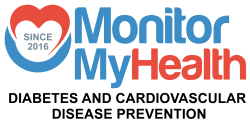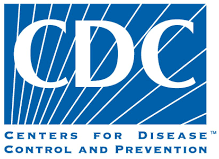Written by Kerry Puglia, MSN, AGNP-BC
The month of February is known for Valentine’s Day, love, and showing appreciation for those close to us. But did you know that February is American Heart Month? Monitor My Health’s mission is to prevent disease, and this month we would like to bring awareness to your heart health. High blood pressure, also known as hypertension, is a risk factor that can damage your heart. Let’s talk about what hypertension is and how it can affect your health.
What is Blood Pressure?
Your medical provider likely took your blood pressure at your last exam. The process begin with a nurse or other medical technician placing a cuff around your upper arm. The cuff squeezes your arm and then releases while the machine or nurse measures the blood pressure. Blood pressure is recorded using two numbers. An example is 120/80 or “one hundred twenty over eighty.” There is good reason blood pressure is often the first thing a medical provider checks. Extremes in your blood pressure can damage many parts of your body, including your eyes, brain, blood vessels, heart, and kidneys. But what is it that the provider is really measuring? And what do those numbers mean?
The heart’s main function is to pump oxygen-rich blood throughout your body. As blood travels through your body, it pushes against your blood vessel walls. This pressure that is pushing against the vessel walls can be measured with a blood pressure cuff. The pressure in your blood vessels when the heart pumps is called the systolic blood pressure and this is the top number in your blood pressure reading. The pressure pushing against your vessels when your heart is at rest in between beats is the diastolic pressure, the bottom number in your reading.
Another way to think about blood pressure is to compare it to water traveling through a garden hose. When you turn the water on, the water pushes through the hose forcefully. That is systolic pressure. As you turn the water off, the flow slows; that is the diastolic pressure. If you keep turning the water on and off repeatedly, the water traveling through the hose is like the blood traveling through your vessels.
Here is an example:
● BP of 120/80 mm Hg
● When the heart pumps, the pressure in your vessels is 120 mm Hg (systolic)
● When the heart rests, the pressure in your vessels lowers to 80 mm Hg (diastolic)
What is Hypertension?
Now that you know what blood pressure is and how it is measured, let’s review what an ideal result is and what warrants a diagnosis of hypertension.
According to the American Heart Association (AHA), normal blood pressure levels are below 120/80 mm Hg. The AHA defines hypertension (the medical term for high blood pressure) as systolic blood pressure at or above 130 mm Hg OR diastolic blood pressure at or above 80 mm Hg.
Here are some more specific categories:
● Normal = <120/80 mm Hg
● Elevated = 120-29/<80 mm Hg
● Stage 1 Hypertension = at or above 130/80
● Stage 2 Hypertension = at or above 140/90
One instance of blood pressure over 120/80 should be further investigated but by itself does not warrant a diagnosis. A false elevation of blood pressure can occur for many reasons, including being nervous, ingesting caffeine or nicotine prior to reading, or by using improper technique. Because of this, your physician will use the average of two or more blood pressure readings from two or more separate points in time.
A hypertension diagnosis needs to be confirmed by a physician. If you are noticing elevated levels while monitoring your blood pressure at home, please make an appointment to review this with your medical provider.
Why is Hypertension Bad?
With hypertension, the blood is pushing against the blood vessel walls more forcefully than it should be. This causes damage, such as tiny tears, in the delicate inner lining of the blood vessel walls. With time, cholesterol, a fat consumed in your diet, starts to get trapped in these tiny tears. Eventually, more cholesterol attaches forming plaques, which narrow the vessels and cause further increases in blood pressure.
In the garden hose comparison, let’s say the water is turned all the way on and a lot of water is traveling through the hose quickly (simulating high blood pressure). You can see the hose stretching from the force. After years and years of this, the hose will start to get damaged. There will be little tears in its lining. And at some point, it will be time for a new hose. But you can’t get new blood vessels. That is why it is important to maintain your blood pressure below 120/80.
What Kind of Symptoms Will I Have if My Blood Pressure Starts to Go Up?
Most likely, none. You will likely feel fine, especially in the early stages. Sometimes, the first symptom of untreated high blood pressure is a heart attack or stroke. Hypertension is known as a “silent killer” because of such events.
According to the Centers for Disease Control and Prevention (CDC), about 33% of U.S. adults are not aware that they have high blood pressure. They feel well and see no reason to seek medical care. To stay in control of your health, see your healthcare provider routinely so they can check your blood pressure.
What can I do to prevent Hypertension?
Stay tuned for our next blog post, which will outline eight changes you can make to decrease your chances of a future hypertension diagnosis. Already diagnosed? Don’t worry, these tips will help to control your blood pressure, a reliable way to prevent damage to your delicate blood vessels.
References
1. Centers for Disease Control and Prevention. Facts about hypertension.
2. American Heart Association. What is High Blood Pressure?




